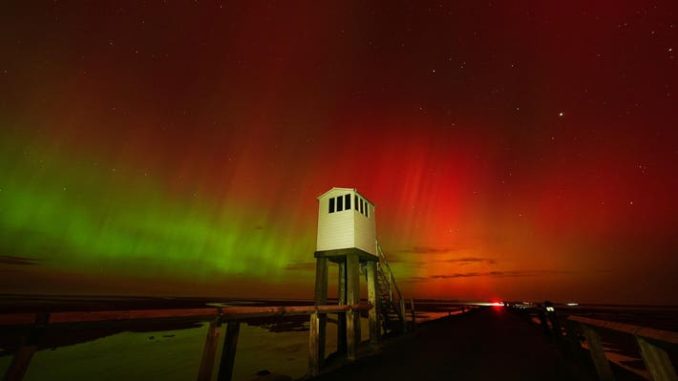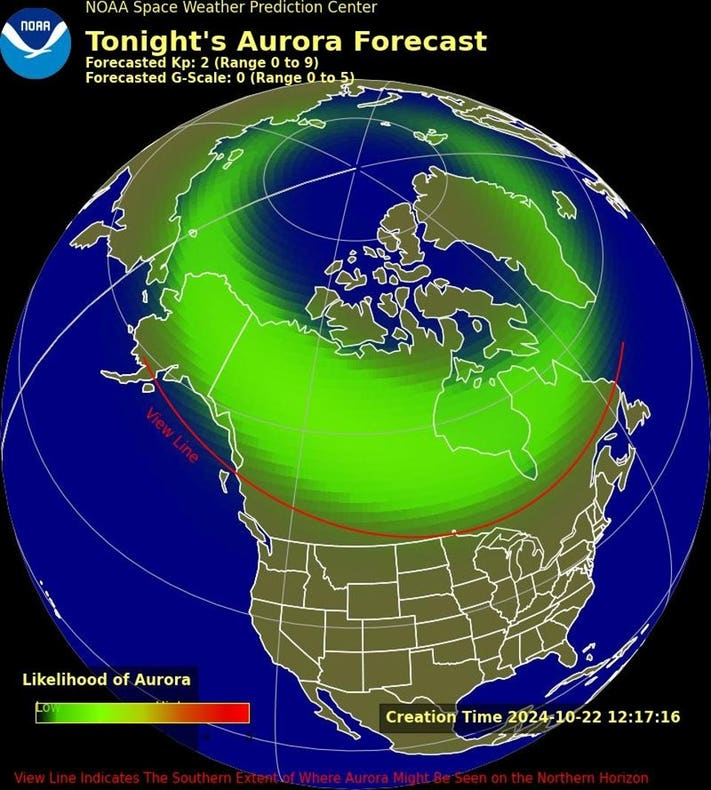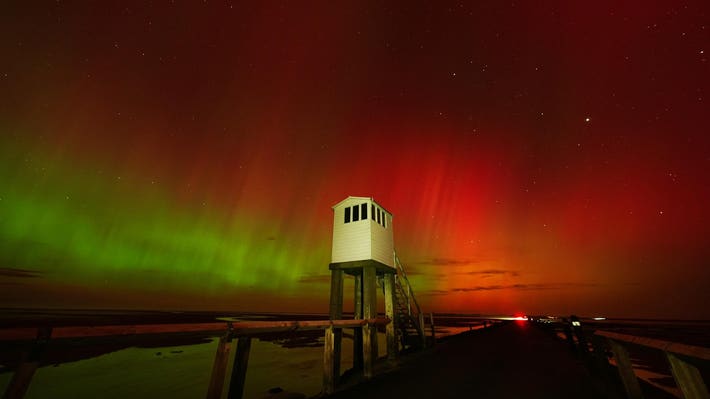
Northern Lights Update: Map Shows Where Aurora Borealis Would Appear Tonight
A section of the northern U.S. will have an opportunity to see aurora borealis Tuesday night, as activity on the sun’s surface reaches its peak, according to a National Oceanic and Atmospheric Administration forecast.
Key Facts
Monday night’s aurora borealis forecast has a Kp index of two on a scale of nine, meaning the northern lights will be pushed farther north and “quite dim in intensity.”

Auroral activity is expected to be as quiet on Wednesday, according to NOAA, which forecast a Kp index of two.
Elysayed Talaat, NOAA’s director of space weather observation, said last week the sun reached its “solar maximum,” which suggests an increase in chances of seeing aurora borealis and a period to see the phenomenon will last longer than average.
Where Will The Northern Lights Be Visible?
Most of the continental U.S. will be below the view line—indicating a minimal opportunity to see the northern lights—though most of Alaska and Canada will have a higher chance of viewing the aurora. An area in northern Minnesota will have a lower likelihood of seeing the northern lights.
What’s The Best Way To See The Northern Lights?
Traveling to a high vantage point away from light pollution is the best bet to see the northern lights, according to NOAA. The lights will peak between 10 p.m. and 2 a.m. local time.

What’s The Best Way To Photograph The Northern Lights?
Adobe recommends setting a camera’s focus to the farthest possible setting with a wide aperture, low shutter speed and high ISO value, as the lights may not be visible to the naked eye. Visit Iceland, Iceland’s tourism website, suggests turning on night mode on a smartphone with a lower shutter speed.
Key Background
The sun’s 11-year cycle, Solar Cycle 25, has reached its peak, meaning there will be more sunspots resulting in “high-impact” space weather, according to NASA. This includes more coronal mass ejections—plasma and magnetic fields shot from the sun’s surface—that cause more geomagnetic storms across Earth and aurora borealis to be pulled farther south. The peak will likely continue through 2025 and into early 2026, NASA said. Other celestial events have entered the night sky in recent weeks, including the ATLAS comet, which will reach its closest point to Earth later this week and the Orionids meteor shower, a display caused by remnants of Halley’s comet entering the atmosphere.
Leave a Reply